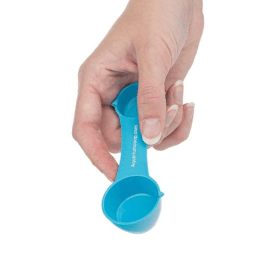Can You Fly With Aquarium Fish? Here is how we do it.

Have you ever visited a fish store while traveling and seen a fish that you couldn’t live without? Maybe you are on vacation or a business trip, and you stop into a local fish store and find the holy grail fish that you’ve never seen in person before and desperately want to take it home. There is one thing holding you back though – you have never brought fish onto a plane and are nervous to try it. This article is meant to serve as a step-by-step guide that details how you can successfully bring fish home with you on a plane. It will also provide other considerations that you should think through when traveling with fish onboard an aircraft. This article speaks only to air travel within the continental United States of America.
Make Sure You Have Tank Space
Before you fly fish home with you, it’s important to have a plan as to where you will house your new fish. Its highly recommended that you have a tank already setup and ready to receive the fish once you arrive home from your journey. Depending on how long your flight is, the last thing you want to do is make it all the way home, and then scramble to setup a tank for your new fish. The most ideal scenario is to have an established quarantine tank ready to house the fish upon arrival.
Travel Day Logistics
Prior to purchasing your fish while on the road, be sure to consider your logistics and travel plans for the day of the flight. If you plan to fly with fish, it can be helpful to use a planning tool called backwards planning. This entails building a timeline starting with the time of your departing flight and working backwards until the time you plan to purchase your fish. It is a good idea to allow for some buffer time on the day travel, particularly if this will be your first time flying with fish. Some things to consider are:
- What time of day do you plan to visit the fish store?
- How far is the fish store from the airport?
- Will you be making this transit during rush hour?
- Do you have to return a rental car prior to going to the airport terminal?
- Do you have other bags that you will now have to check given that you will be carrying a bag of fish with you?
- What type of bag or container will you use to carry you fish with you?
- Do you have TSA pre-check?
- Try to make the fish store the last thing you do prior to going to the airport. This will ensure that the fish spend the least amount of time possible in the bag and will help mitigate additional stress.
Thinking through these questions and having a plan will help mitigate the risk of something going wrong on your day of travel. Remember, during this travel you will be carrying an extra bag (potentially several extra bags) filled with water. Moving around the will be slightly more difficult.
At the Fish Store
You are now at the fish store and ready to select your fish. It can be helpful to tell the employee what you are trying to do. By letting them know that you will be traveling a long distance they may be more understanding and even more careful about how they go about preparing your fish. Here is a list of tips for while you are at the fish store prior to flying:
- Inspect the fish - After they net your fish, be sure to take a close look at them to make sure they are healthy. The last thing you want to do is take an already vulnerable animal and put them through an extra stressful journey on the floor of an airplane.
- Double bag it - After confirming they are lively and fit for flight, kindly ask that the employee double bag the fish. It is preferable to have both bags oriented in the same direction, with the openings and rubber bands both on the top of bag. Some fish stores will put the second bag upside down which is not ideal for traveling through the airport because some TSA checkpoints may require you to open the bags to test the water.

- Ask for extra bags and bands – To have an extra level of protection, it is a good idea to ask for a few extra bags and rubber bands. In the off chance that a bag leaks or ruptures, it is good to have a backup plan and the ability to re-bag the fish in a fresh bag.

- Bring an Insulated Bag – As soon as the fish are bagged at the store it is a good idea to put them immediately into an insulated bag with the ability to close. The Aquarium Co-op Insulated Bag is a great option for this. However, if you are in a pinch and didn’t think to bring it, you can likely find an insulated back at a local grocery store. Ideally you will place them in the bag in such a way that the fish bags are immobilized. You want to limit the possibility of the fish bag rolling around inside of the insulated bag. If you have multiple bags of fish to fill the space it will limit the amount of free space that the bags have to jostle around during transit. You can also ask the store for a few extra bags filled with tank temperature water to use as stabilizers as well as a temperature buffer to help hold the temperature inside of the bag during transit. After placing them in the insulated bag, resist the temptation to keep checking on them. Each time you open the bag you will disturb the fish and destabilize the temperature inside of the insulated bag.
At the Airport
So now you have your fish in your insulated bag, you’ve arrived at the airport, and are ready to proceed to security. Remember that in the United States you are only permitted one carry-on bag and one personal item. If your fish bag is your third bag, you will need to check one of your other items. Proceed through the security checkpoint as normal until you arrive at the X-Ray machines. Upon arrival at the machine, locate a TSA agent and tell them that you have live aquarium fish in the bag that you cannot put through the X-Ray machines. In our experience, most TSA agents have never had to deal with this situation. Typically, they will give a look of bewilderment or excitement, and then flag down their supervisor to ask for guidance. The supervisor will then generally ask you what you are transporting. Tell them that you are transporting live aquarium fish. They will then likely take the bag of fish from you and tell you to proceed through the security checkpoint and meet them on the other side. Beyond this step the protocols seem to be different in different airports, but here are a few likely potential reactions once you have met them on the other side of security.
- They will ask you to open the bag and will proceed to visually inspect each bag of fish. They will check to ensure that the fish in each bag are alive and swimming. If they see that the fish are alive and healthy they will put the fish back into your bag and send you on to your plane.
- They will have you open each bag of fish and will test the water using a chemical test strip. Following their examination of each water test, they will hand the fish back to you and you will need to re-bag all of the fish at the TSA checkpoint prior to proceeding through security.

- They will get extremely excited and most of the TSA staff will gather around the fish and start asking you about your new pet. They will then proceed to tell you about their childhood goldfish or the oscars that their uncle used to have in a 55 gallon tank in their basement….but seriously….they will!
According to the TSA website, “Live fish in water and a clear transparent container are allowed after inspection by the TSA officer.” That being said, the TSA officers have the final authority on what will or will not be allowed to pass through security.
On The Plane
The hard part is now over. You’ve arrived at the airport, passed through security, and are now making your way onto the plane. Proceed onto the plane as you normally would and make your way to your seat. In our experience, the best place to put the bag is on the ground either under the seat in front of you, or underneath your legs on the ground. Make sure you know ahead of time if you are sitting in a bulkhead seat or in an exit row. These rows have special restrictions about placing bags on the ground and can make the process more challenging. If this happens to you, you can put the fish in the overhead storage bin, but it is riskier as baggage can tumble during takeoff or flight and could potentially cause one of the fish bags to rupture. That being said, both methods can work.
Arrival at Home
Once you reach your destination, proceed normally with your preferred acclimation process. Given the extra stress put on the fish from a longer trip to your house, it is extremely wise to consider putting your new friends into a quarantine tank to reduce the risk of introducing disease into your home aquarium.
Final Considerations
- Is There an Easier Way? - Prior to purchasing your fish and bringing them onto the plane, really consider why you want to buy those specific fish. Flying fish home is very doable, as outlined above, but it does create additional planning and logistical hurdles that will complicate your travel. Think through other potential options to ensure that you really want to go through the trouble of hand carrying your aquatic buddies onboard with you. Is it a special line bred species that you want to maintain, is it something rare that you are unable to find elsewhere? Bottom line, ensure that you really want these fish and that there isn’t an easier way to get them.
- Choose Fish with High a Probability for Success – Some fish will be easier to transport than others. For example, if you are going to be on a 6-hour cross country plane flight from Seattle to Tampa, you may not want to try and transport medium sized discus on the plane. It also is wise to steer clear of fish with large spines that may puncture a bag while in flight. Rebagging a fish on a plane might make for a great story, but will probably not be a great experience for fellow passengers, and certainly not the fish.
- Be Friendly and Have Thick Skin – Transporting live fish on a plane is not a common thing to do. In some ways, you are making the lives of other people more difficult by doing this. The TSA officers have likely not dealt with this, nor the airline personnel. If you are asked to move your bag on the plane, the flight attendant may be shocked to hear you are carrying live fish. If people express frustration or confusion to you as to why you would be carrying fish with you on a plane, remember to stay positive and keep a smile on your face. It will help make the process smoother and more enjoyable for everyone involved.
Safe travels and happy fish keeping!




